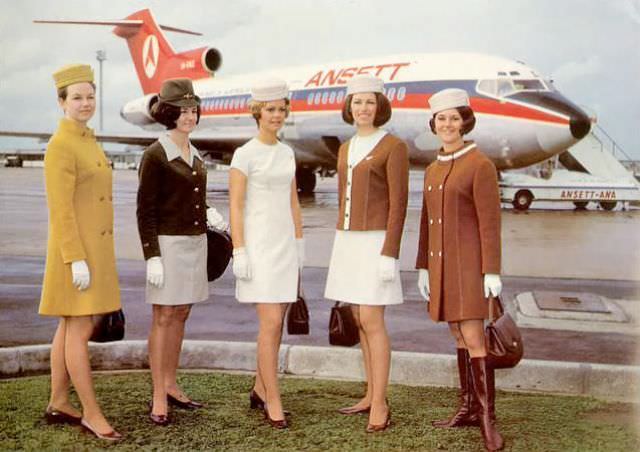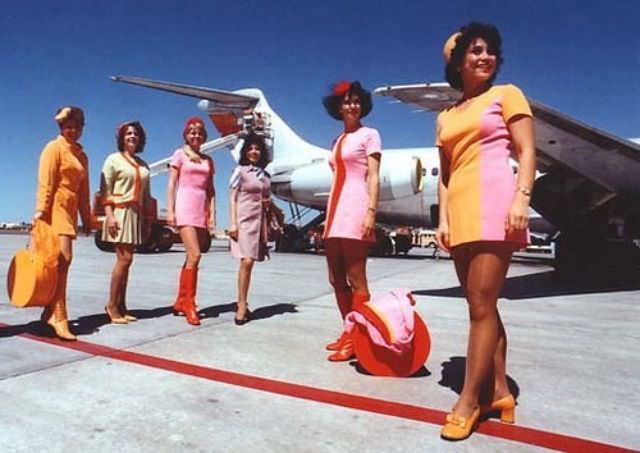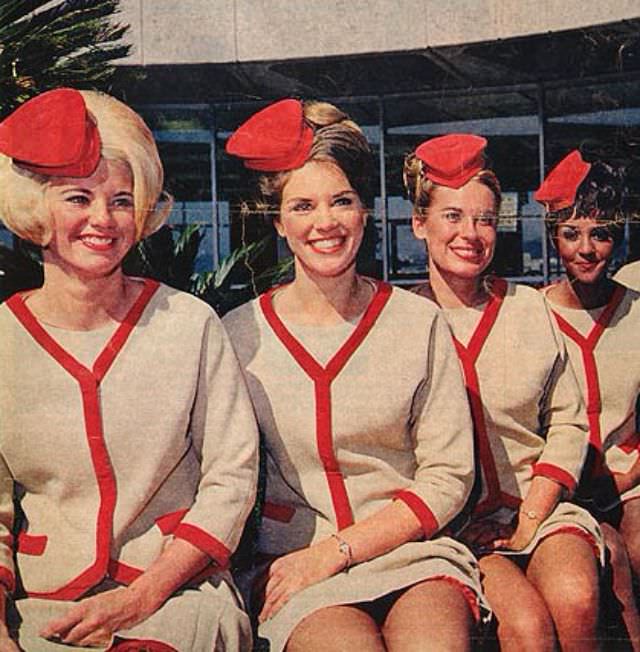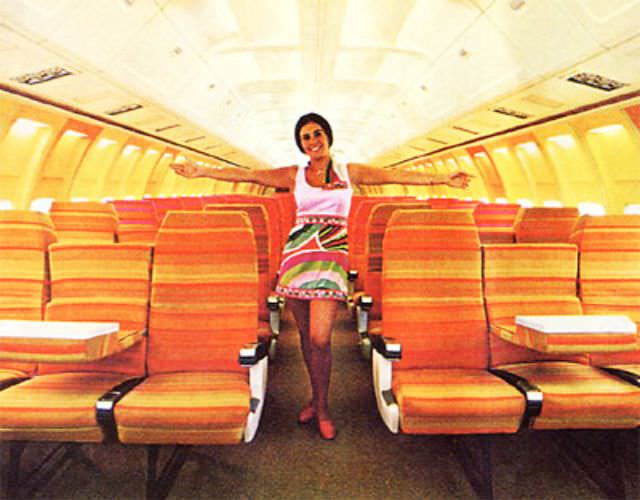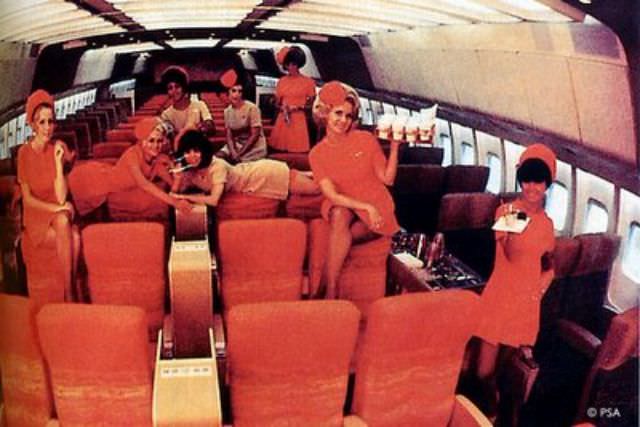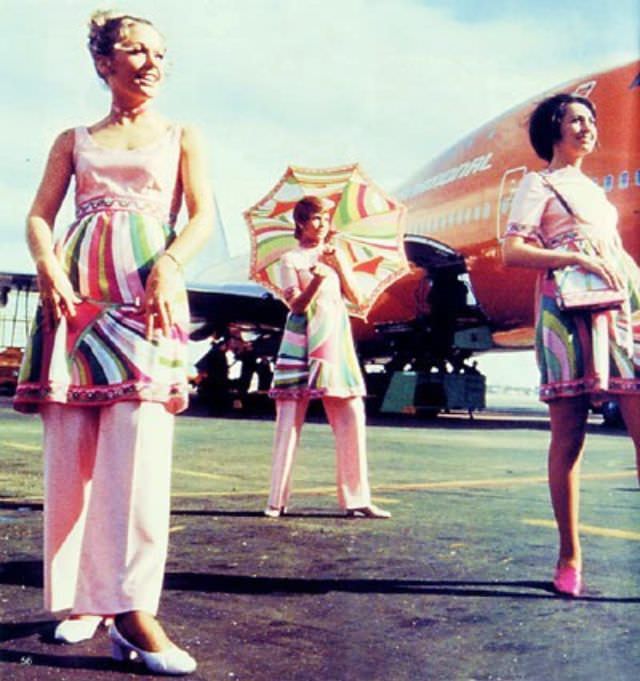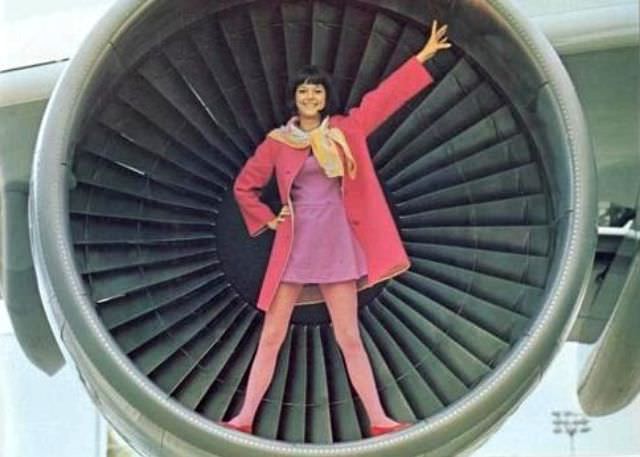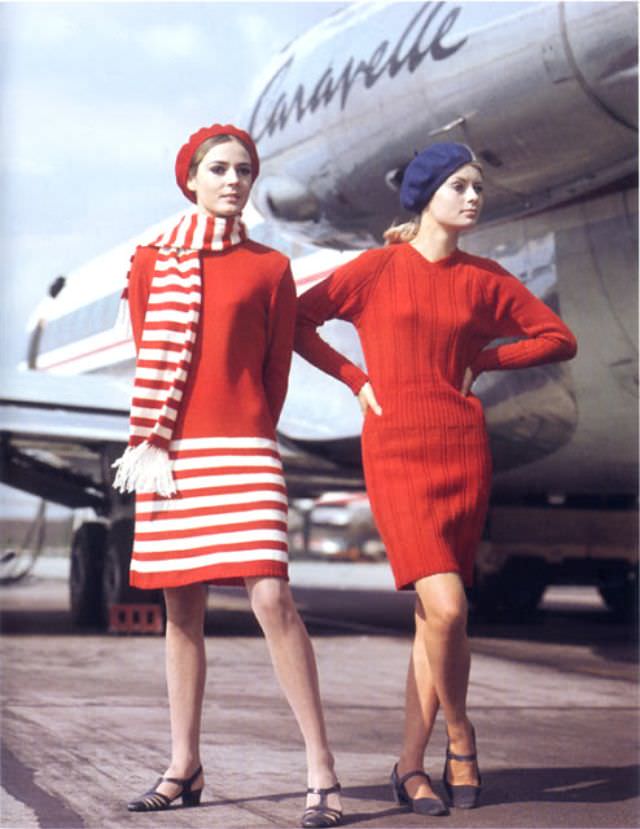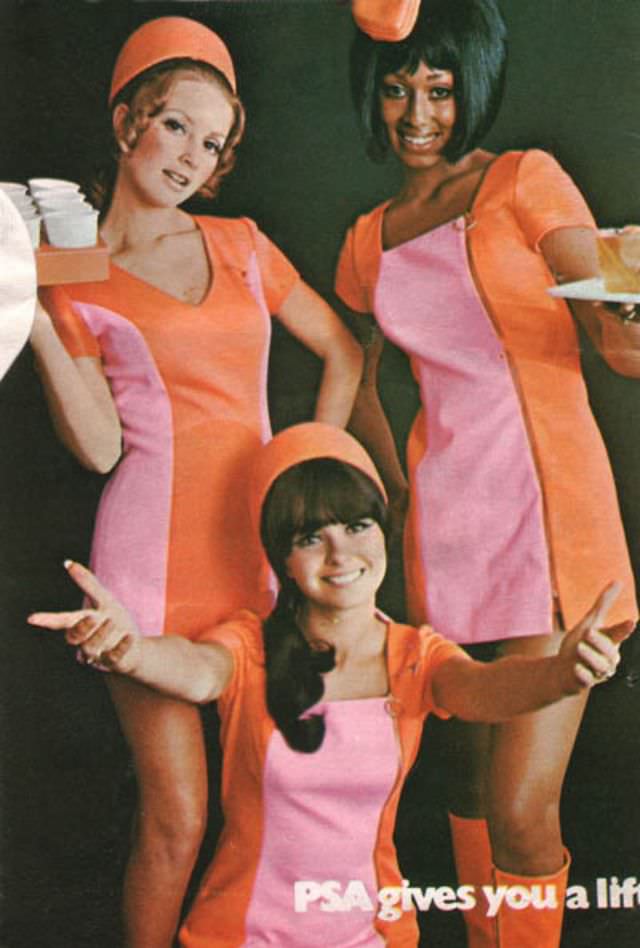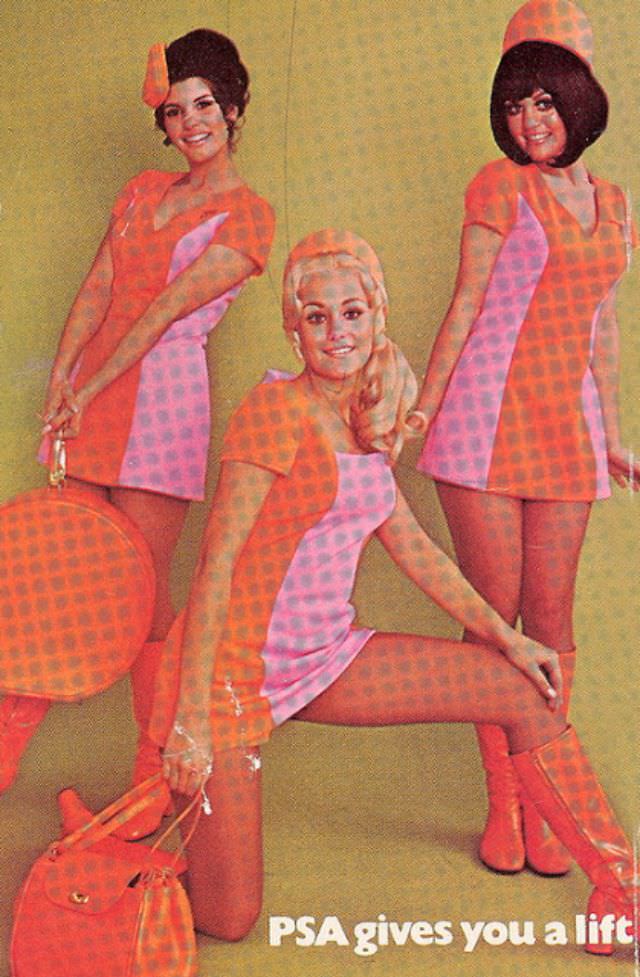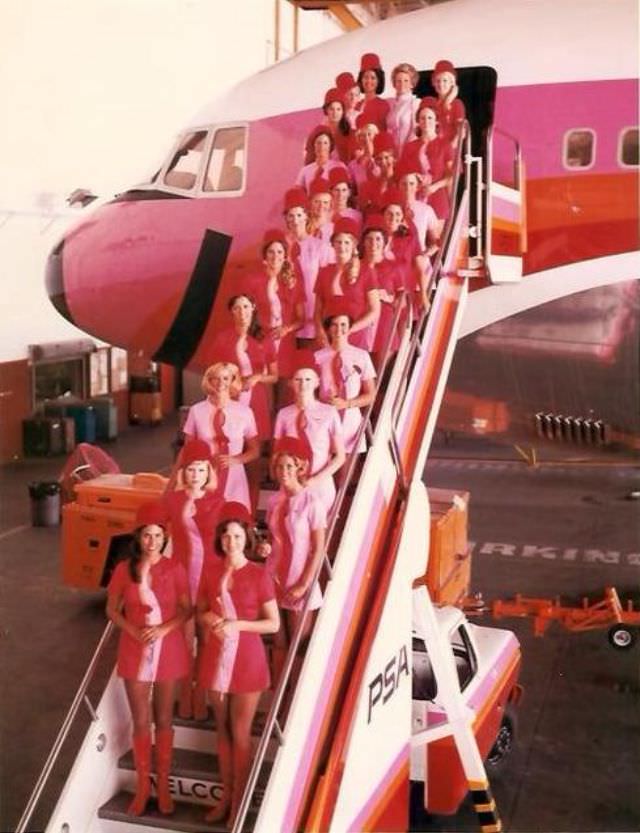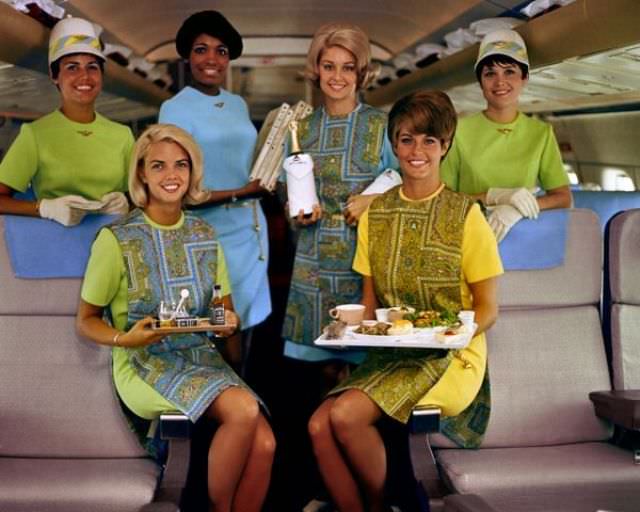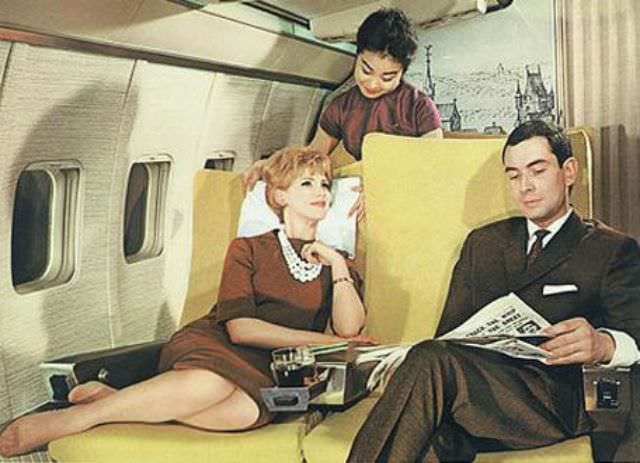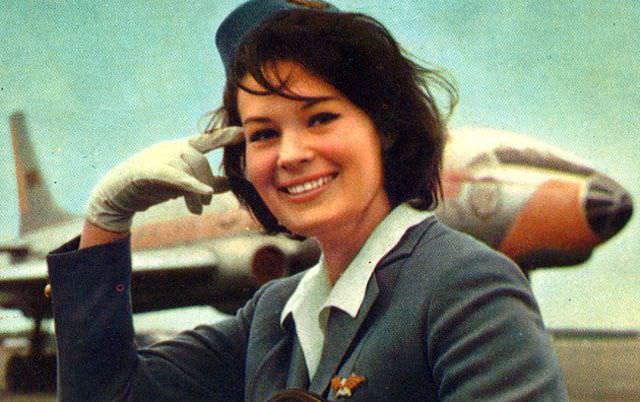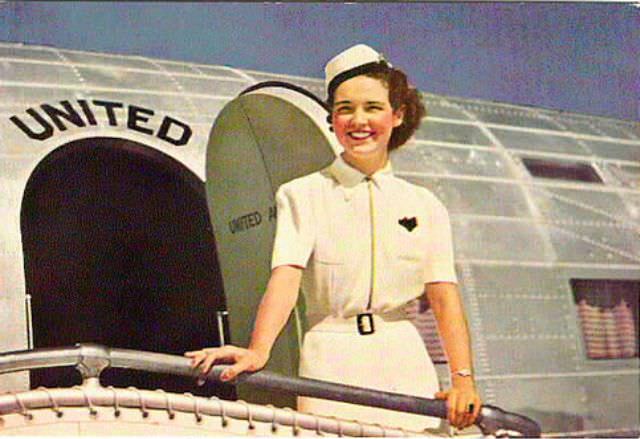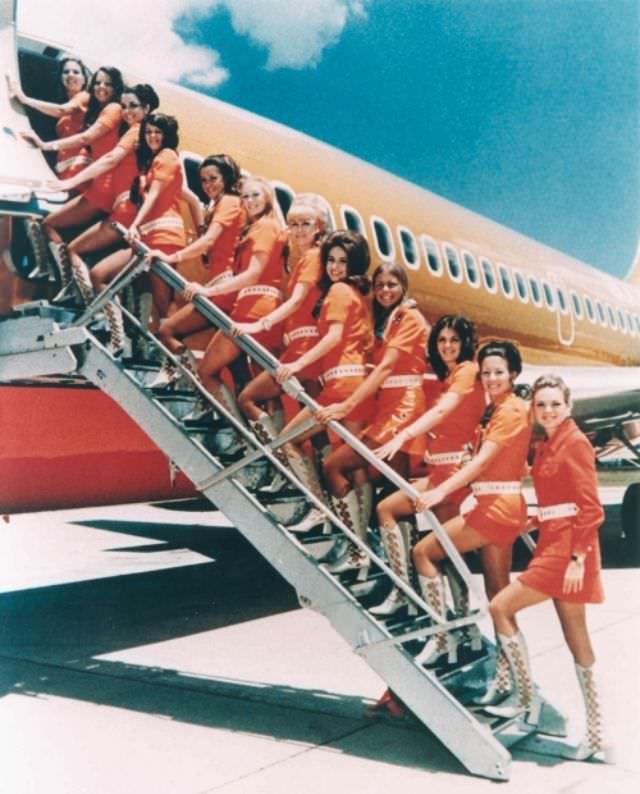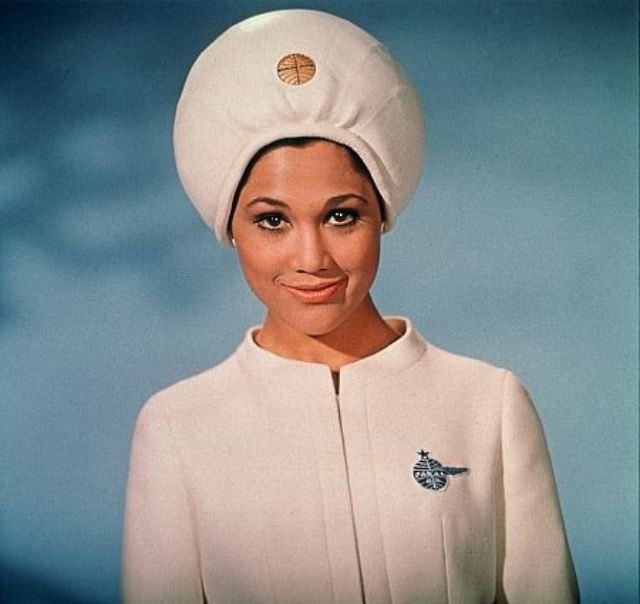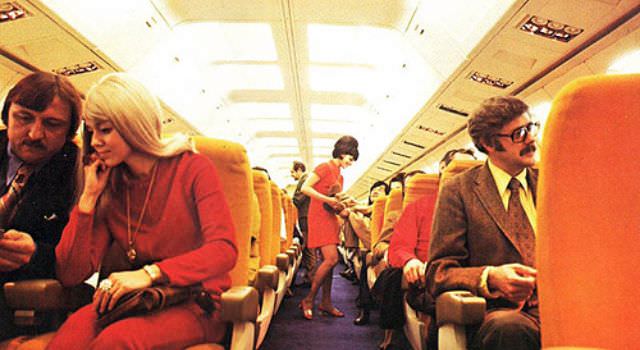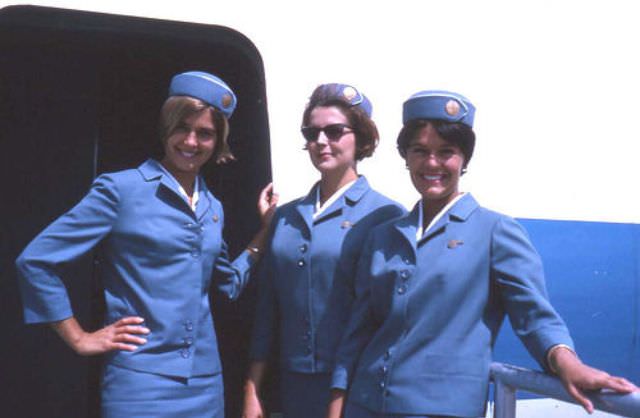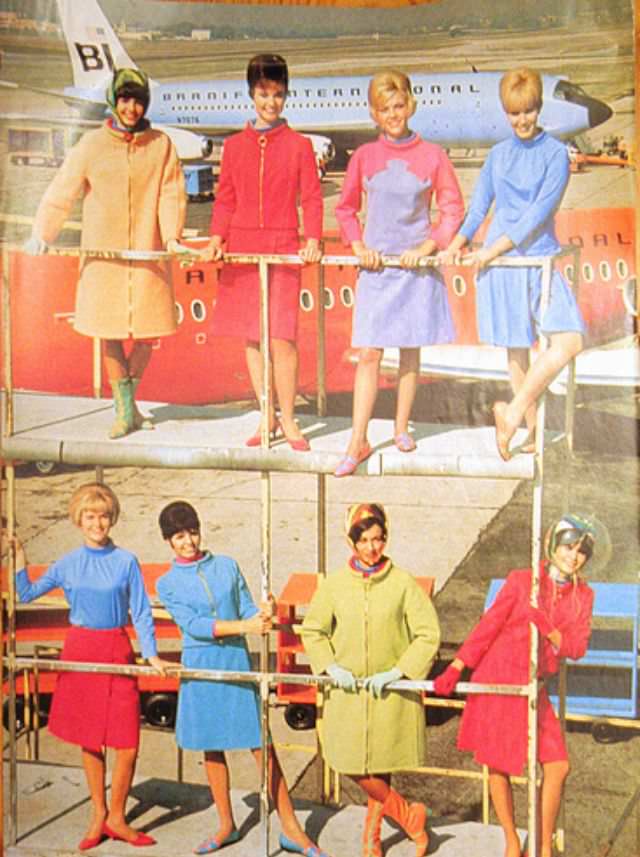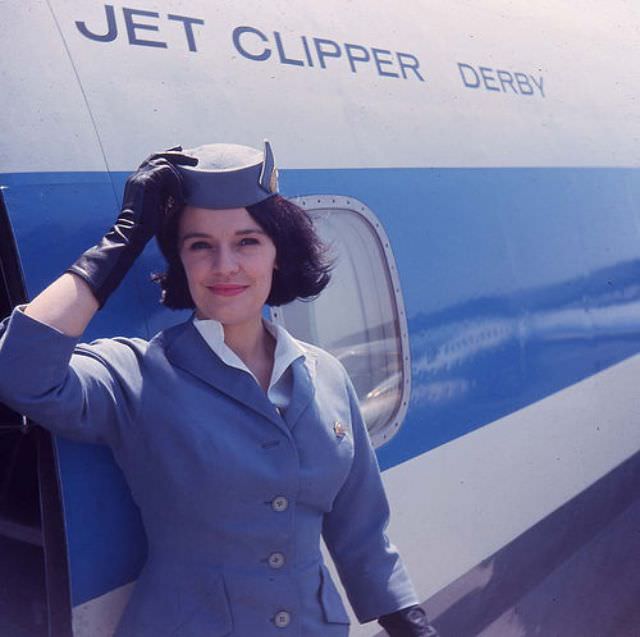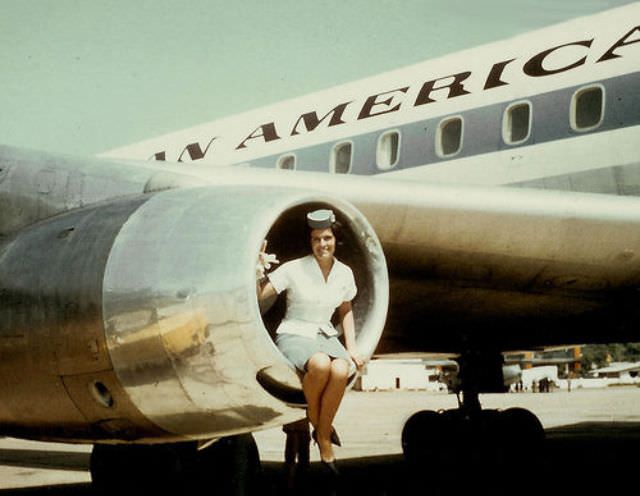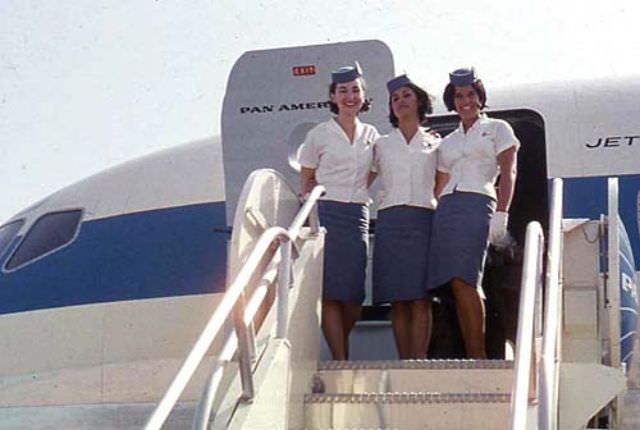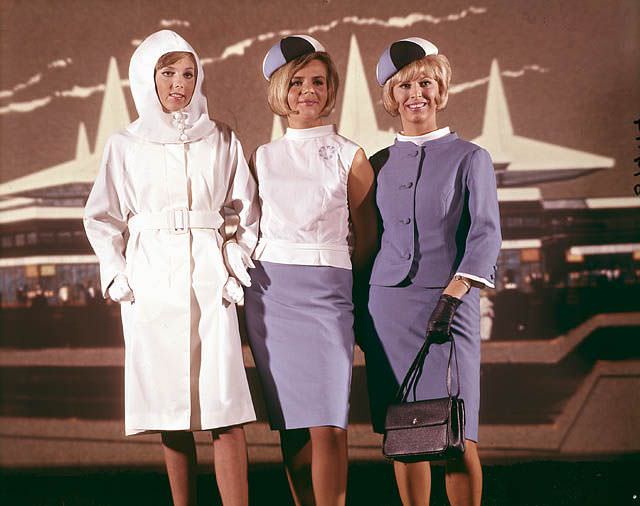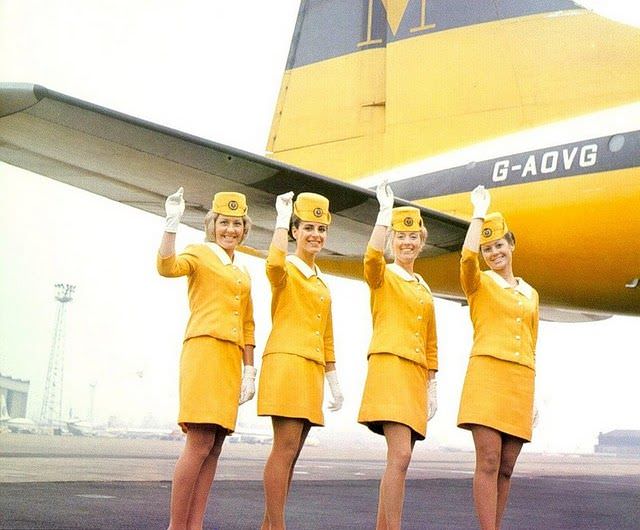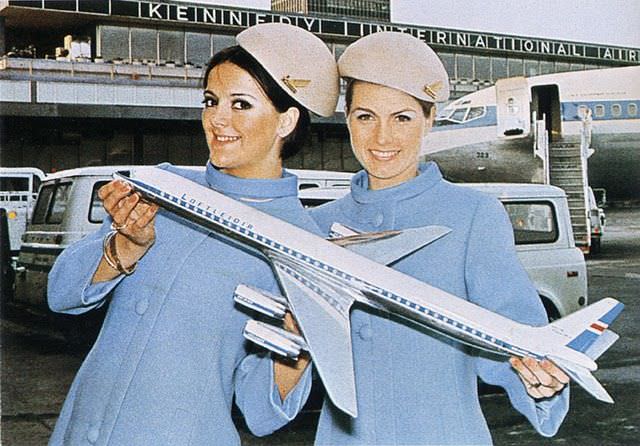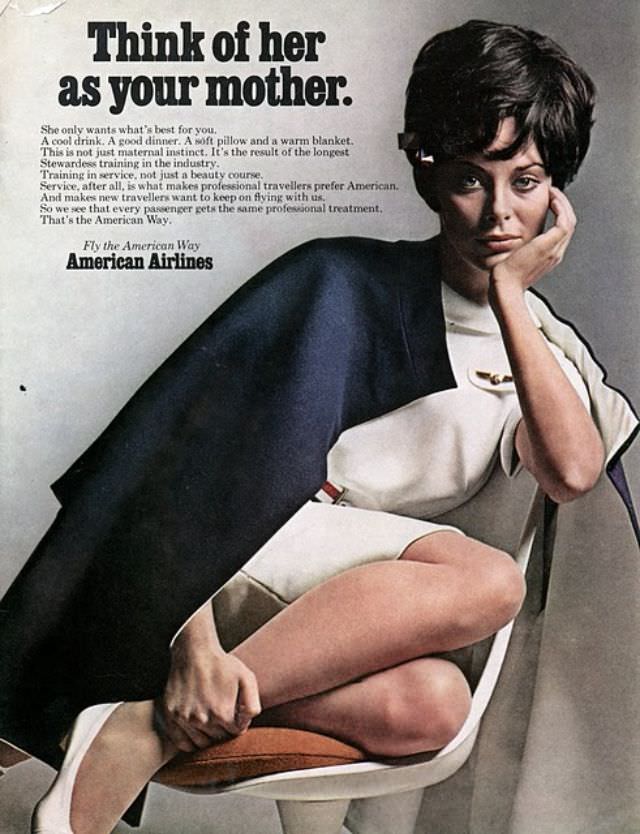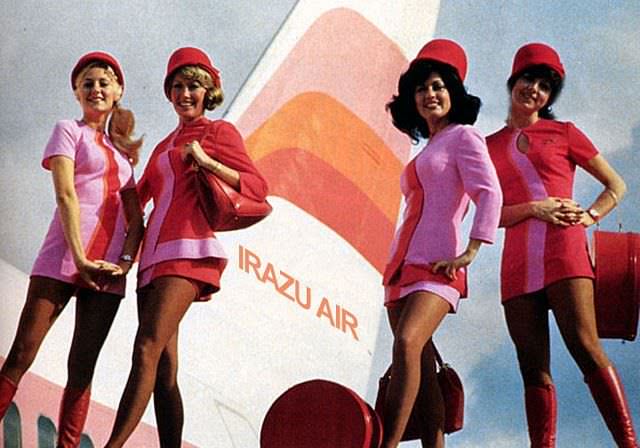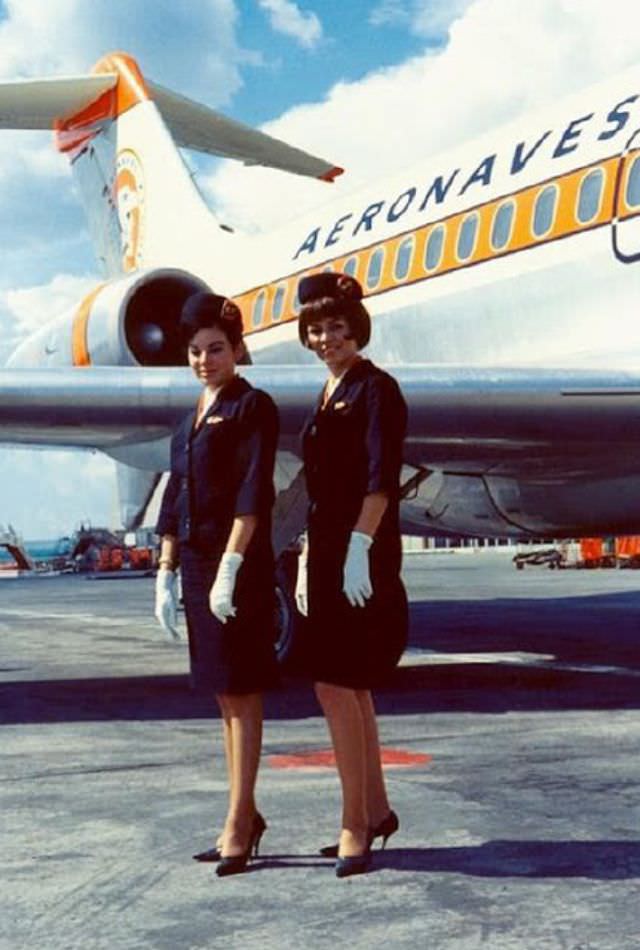The golden age of air travel, spanning from the 1950s to the 1970s, was a time of elegance, transformation, and societal shifts. While passengers marveled at the technological advancements of jet travel and the thrill of soaring through the clouds, it was the stewardesses who embodied the era’s charm, grace, and unwavering professionalism. These women, often referred to as “sky girls,” were more than just servers of food and drinks; they were cultural icons, symbols of adventure, and trailblazers in a rapidly changing world. Their iconic uniforms, impeccable service, and evolving roles reflect the changing social landscape of the time, making them an integral part of aviation history.
The 1950s: Glamour Takes Flight
In the post-war 1950s, air travel was a luxury reserved for the elite, and airlines spared no expense in creating a glamorous image. Stewardesses were at the forefront of this image-making, embodying the idealized femininity of the era. Their uniforms, meticulously designed by renowned fashion houses like Christian Dior and Oleg Cassini, featured crisp white blouses, tailored suits, and elegant hats. These outfits were not just functional; they were fashion statements, reflecting the latest trends and showcasing the airlines’ commitment to style and sophistication.
Read more
The stewardess’s role extended far beyond serving meals and drinks. They were trained in a wide range of skills, including first aid, emergency procedures, and passenger comfort. Their duties included everything from assisting with luggage and demonstrating safety procedures to calming nervous flyers and tending to airsick passengers. They were expected to be the perfect hostesses, always maintaining a cheerful demeanor, a welcoming smile, and impeccable manners. Their job was to create a seamless and enjoyable experience for passengers, making air travel feel like a luxurious escape.
The hiring process for stewardesses was rigorous, with airlines seeking young women who possessed not only beauty but also intelligence, poise, and the ability to handle demanding situations. They were trained in etiquette, cultural sensitivity, and even basic mechanics. The training was intense, but it prepared these women for the challenges of working in a fast-paced and demanding environment.
The 1950s stewardess became a symbol of the modern woman, independent, adventurous, and capable. They were featured in advertisements, magazines, and even movies, further solidifying their image as icons of the era. Their glamour and professionalism helped to popularize air travel and make it more accessible to a wider audience.
The 1960s: A Shift in Style and Service
As the 1960s dawned, a cultural revolution was underway, and the airline industry was not immune to its influence. The conservative styles of the 1950s gave way to a more youthful and vibrant aesthetic. Stewardess uniforms embraced bolder colors, shorter hemlines, and playful accessories like go-go boots and pillbox hats. Designers like Emilio Pucci and Pierre Cardin brought a touch of mod fashion to the skies, creating uniforms that were both stylish and functional.
The service onboard also evolved. Airlines began to offer a wider variety of meals and drinks, catering to different tastes and dietary needs. Stewardesses were trained to prepare and serve gourmet meals, mix cocktails, and provide personalized service to each passenger. In-flight entertainment expanded beyond magazines and newspapers to include movies, music, and even live performances.
The 1960s also saw the rise of the “jet set,” a glamorous social circle that traveled extensively by air. Stewardesses were often part of this world, rubbing shoulders with celebrities, politicians, and business leaders. This exposure helped to further elevate their status and solidify their image as symbols of luxury and sophistication.
The 1970s: A Time of Change and Challenges
The 1970s brought significant changes to the airline industry and the role of the stewardess. The rise of feminism challenged traditional gender roles, and stewardesses began to demand equal treatment and opportunities for advancement. Airlines faced lawsuits over discriminatory practices, such as mandatory retirement ages for stewardesses and restrictions on marriage and pregnancy.
In 1964, the Civil Rights Act was passed, prohibiting discrimination based on race, color, religion, sex, or national origin. This landmark legislation had a profound impact on the airline industry, opening up opportunities for women and minorities who had previously been excluded from certain positions.
Uniforms became more practical, reflecting the changing needs of stewardesses who were taking on more responsibilities. While still stylish, they were designed with comfort and functionality in mind. The “coffee, tea, or me?” era emerged, with airlines using suggestive advertising campaigns to attract male passengers. This controversial practice highlighted the ongoing struggle for gender equality in the workplace.
Despite the challenges, stewardesses of the 1970s continued to play a crucial role in the airline industry. They were at the forefront of passenger safety, providing critical assistance during emergencies and ensuring the comfort and well-being of travelers. They also played a vital role in customer service, creating a welcoming and enjoyable atmosphere onboard.


